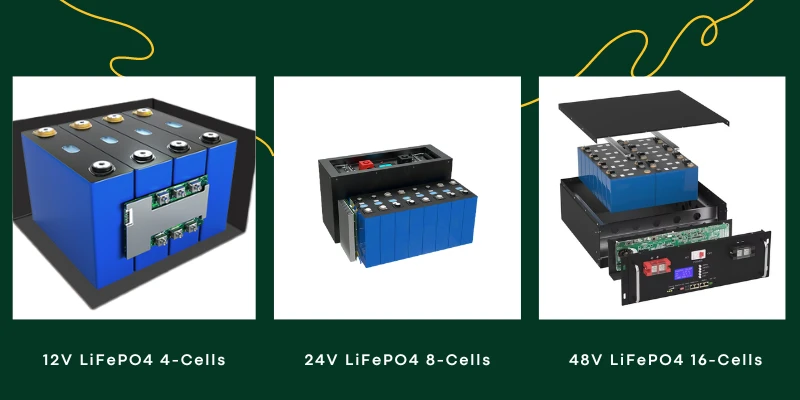When building battery pack, consider the target voltage/capacity/use purpose, and the connection method of the battery is the way to achieve these differences.

Generally speaking, 12V, 24V and 48V battery packs are more popular with battery DIY enthusiasts. These three types of battery packs can satisfy most devices. Since the voltage of a single LiFePO4 battery is 3.2V, series and parallel connections are required to complete a suitable battery pack. In general, high-voltage systems are more recommended, which means smaller currents and lower wiring costs. It is also safer for DIY enthusiasts.
| # of Cells in Series | 4 | 8 | 15 | 16 |
|---|---|---|---|---|
| Battery Nominal Voltage | 12.8V | 25.6V | 48V | 51.2V |
| Operational Voltage Range | 12 - 14.4V | 24 - 28.8V | 45 - 54V | 48 - 57.6V |
In addition, it should be noted that the length of the busbars required by different battery packs may be different depending on the battery connection and placement methods. The details need to be judged based on the actual situation and the battery brand. The Straight placement method is the most recommended. This placement method will make the positive and negative poles of the entire battery pack farther away, thereby making it safer.